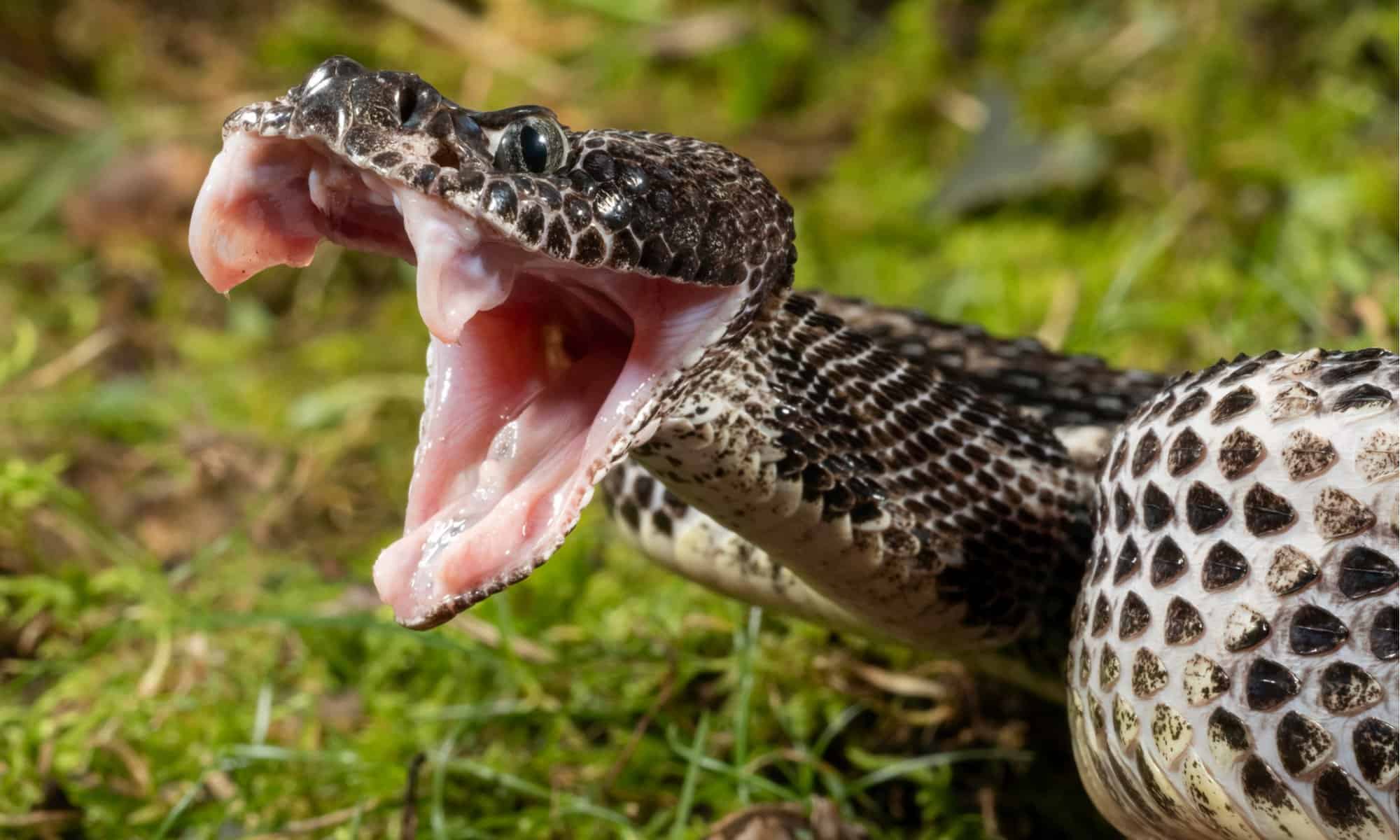There are 21 snake species in Pennsylvania, most of which are harmless. These snakes are also beneficial because they keep pest populations down.
There are only three venomous snakes native to Pennsylvania:
- Timber Rattlesnake — lives in northern and central Pennsylvania.
- Eastern Massasauga rattlesnake — lives in northwestern Pennsylvania.
- Copperhead — lives across all of Pennsylvania.
Fortunately, fatal snake bites are incredibly rare in Pennsylvania. They usually occur because of allergies. It’s also more common if the snake releases a significant amount of venom.
There were only two reported snake bites that occurred in Pennsylvania in 2023. Only one of these bites was from a venomous snake, and the story has a happy ending.
So, always be aware of your surroundings and watch for snakes. But, remember that Pennsylvania snakes are not much to fear.
1. One Pennsylvania Man was Bitten 50 Times
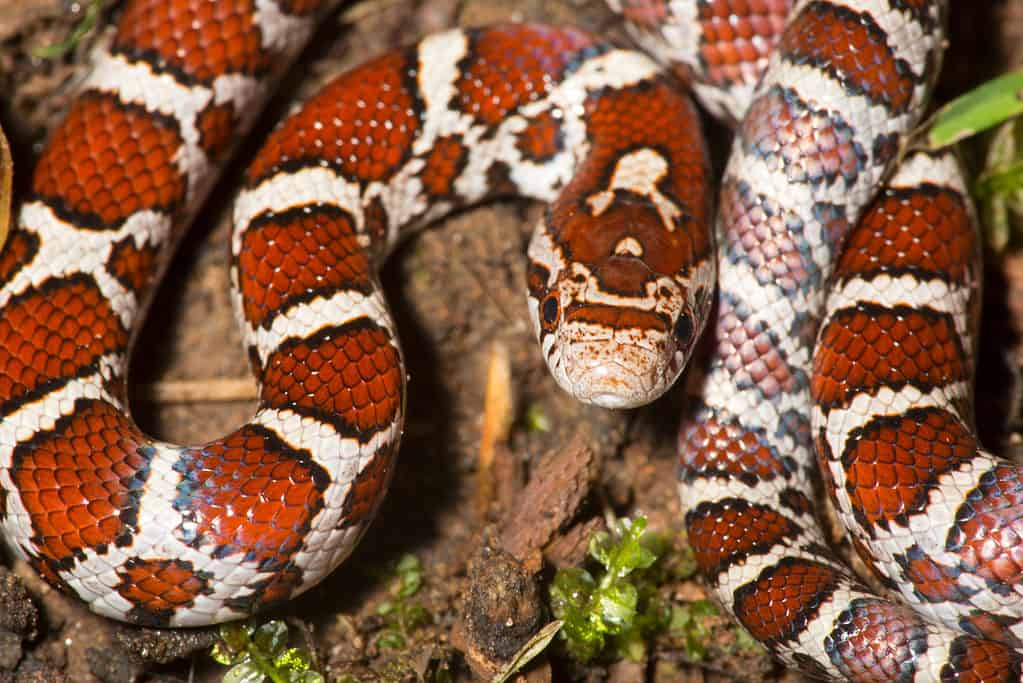
Milk snakes are common in Pennsylvania. While they look venomous, they are harmless.
©Jeff Holcombe/Shutterstock.com
Jesse Rothacker runs the Forgotten Friend Reptile Sanctuary in Lancaster, PA. He was riding his bike along a trail this past summer when he stopped to handle the snake.
The snake in question was a milk snake, which is non-venomous, so Rothacker was in no real danger.
The attack happened because Rothacker wanted to film an educational video for his YouTube channel. The snake was not happy about the situation and was sure to let Rothacker know.
Despite the snake biting him, Rothacker continued filming. He took the experience as a good educational moment. He even laughed as the snake continued its attack.
Despite experiencing 50 bites, Rothacker stood up for the snake. He wanted to make it clear that the snake was not being “aggressive” but rather “defensive.” He took complete blame for the bites and said they wouldn’t have happened had he not picked up the snake.
2. Mabel, the Dog, Survives Rattlesnake Bite
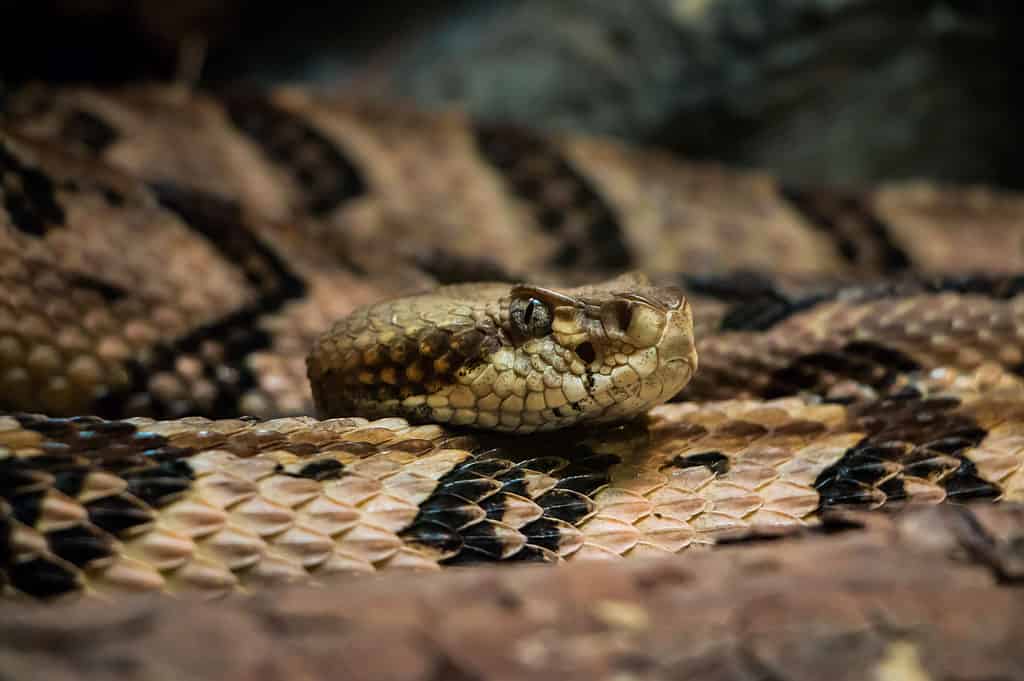
Timber rattlesnakes are venomous, but are non-aggressive, so they aren’t much of a threat.
©Dennis Riabchenko/Shutterstock.com
Mabel, the coon hound mix, was bitten on the afternoon of June 24th.
A Cameron County couple decided to work on the yard around their remote family cabin. The cabin sits in the middle of a clearing. There is also a forest surrounding the cabin, making the area the perfect home for local snakes.
The couple’s two dogs were “helping” one of their owners dig a drainage ditch on the property when the snake bit Mabel. She wandered about 10 feet away to inspect a nearby bush when she jumped and ran in the other direction.
Mabel didn’t yelp in pain from the bite, but her owners found two pin-prick spots on her front right leg. They quickly identified those markings as a rattlesnake bite.
Help was Hard to Find
Mabel’s owners acted quickly, but the remote location of their cabin meant there was no one nearby to help. They raced to several different facilities, but it took them over two hours to find someone to help. By then, Mabel was struggling to breathe and shaking, and her owners weren’t sure she would make it.
Fortunately, the veterinary team at Central Pennsylvania Veterinary Emergency Services began treatment immediately.
Mabel was touch and go for a while, and her owners feared they’d have to say goodbye to her. Luckily, Mabel was a strong pup, and this story had a happy ending. It took many long hours and two doses of antivenom, but Mabel finally pulled through.
Just two weeks after the bite, Mabel was back to her friendly, energetic self.
What Kind of Snake Bit Mabel?
Mabel was bitten by a Timber Rattlesnake, a nearly-threatened, non-aggressive species. These snakes prefer to hide or retreat and only attack as a last resort. There are only about two to three Timber Rattlesnake bites reported every year.
Dogs are More Prone to Snake Bites Than People
Dogs are more likely to be bitten than people. They have very naturally curious and trusting natures. Owners often let their dogs wander off of trail paths. They then stick their noses and paws into places they don’t belong.
Unfortunately for Pennsylvania dog owners, most local veterinarians don’t stock antivenom. It is expensive, and snake bites are rare. It’s a good idea for dog owners to call around and see which of their local veterinary offices stock antivenom in case of an emergency.
3. Death Amongst 100+ Venomous Snakes — But the Snakes Aren’t to Blame

Black mambas were among the 60 venomous snakes found on the deceased’s property.
©Bill Love/Blue Chameleon Ventures, CC BY-SA 3.0 – Original / License
Aliquippa police entered the home of a 23-year-old man on March 21st. Unfortunately, the man was unresponsive and pronounced dead.
Police found over 60 venomous snakes, including a cobra, a rattlesnake, and black mambas. There were over 200 reptiles in the home — 75% of which were venomous. There was even a dwarf caiman crocodile.
The police also found a three-year-old in the home.
The man had snake bite marks on his wrist, but they were deemed to be old and not the cause of death. The cause of the man’s death is unknown.
Four adults lived in the home and were likely trying to sell the animals. Authorities allowed the residents to keep the non-venomous animals. The others were removed and taken to a nearby exotic pet store.
What to do if You See a Venomous Snake
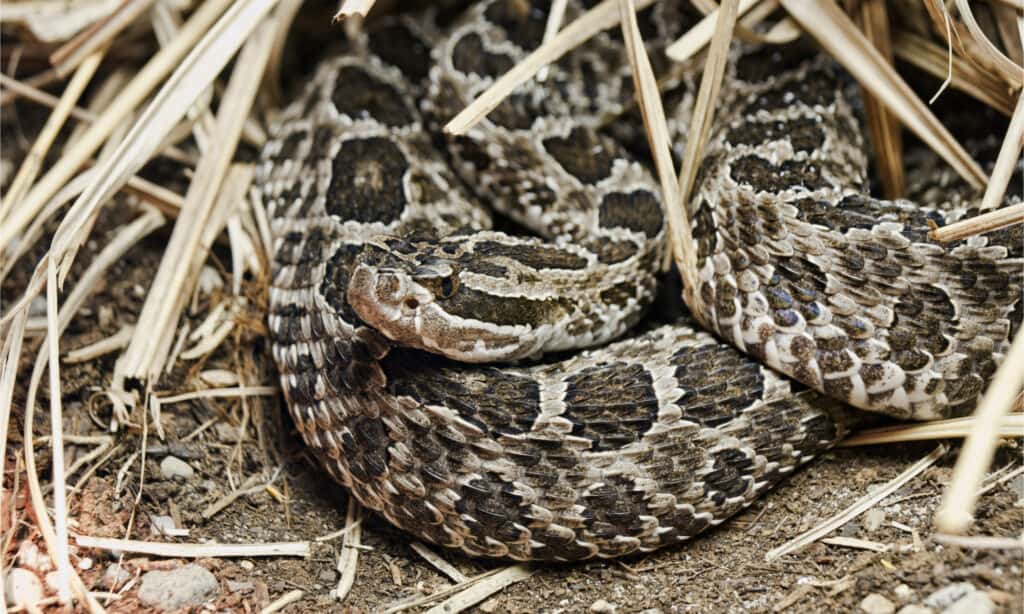
The Eastern Massasauga rattlesnake is one of Pennsylvania’s three venomous snake species.
©DnDavis/Shutterstock.com
Venomous snakes aren’t super common in Pennsylvania. It’s still important to know what to do if you come across one.
First, know the area you’re visiting and the snakes that may live there. Know what these snakes look like so it’s easier to spot them if you come across them. You can always carry a region-specific field guide to help you.
Next, know where and when you are most likely to spot a snake. You will most likely come across snakes in the early morning or evening when they are most active.
During the day, they are likely sheltering from the sun under leaf litter, rocks, logs, or along streams. Watch where you place your hands and feet to avoid startling a snake.
Always remember that even if a snake seems aggressive, it’s more scared of you than you are of it.
Most people experience snake bites if they get too close to the snake or try to handle it. By leaving snakes alone, people can avoid most snake bites.
If you see a snake while out and about, stay calm and move away from it. DO NOT try to approach the snake or scare it away.
What to do if a Snake Bites You
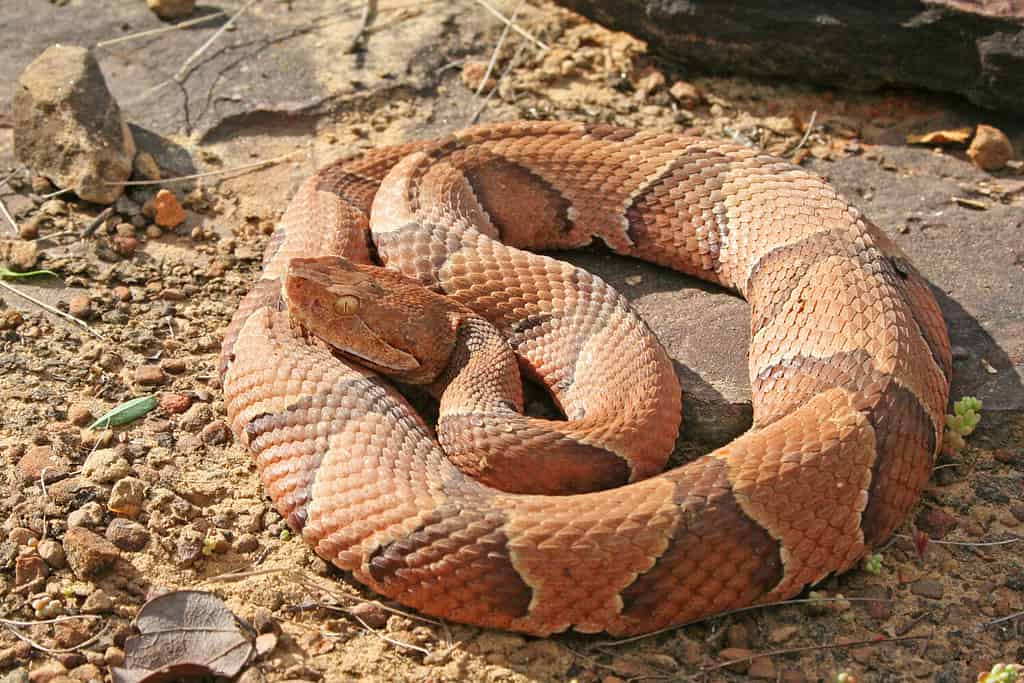
Copperheads are one of Pennsylvania’s three venomous snake species.
©Creeping Things/Shutterstock.com
If a snake bites you, the first thing to do is stay calm and seek help. This tip is crucial if the snake is venomous. Minutes can mean the difference between life and death when it comes to a venomous snake bite.
Symptoms of a venomous snake bite can begin minutes to hours after the bite.
Your number one priority is to CALL 911 AND GET TO THE NEAREST HOSPITAL so you can get anti-venom therapy. This is especially important if the person has swelling, chest pain, trouble breathing, or is unconscious.
UPMC’s Pittsburgh Poison Center offers some additional tips for snake bites:
- If the person is not suffering the above symptoms, call the regional poison center at (800) 222-1222. They will help you identify the snake and what help you need.
- Immobilize and straighten the limb. Lift it as high as possible.
- Wash the bite with soap and water and cover it with a clean dressing.
- DO NOT try to suck out the venom.
- Do not restrict blood flow or use a tourniquet.
- Visit their website for more tips.
Discover the "Monster" Snake 5X Bigger than an Anaconda
Every day A-Z Animals sends out some of the most incredible facts in the world from our free newsletter. Want to discover the 10 most beautiful snakes in the world, a "snake island" where you're never more than 3 feet from danger, or a "monster" snake 5X larger than an anaconda? Then sign up right now and you'll start receiving our daily newsletter absolutely free.
Thank you for reading! Have some feedback for us? Contact the AZ Animals editorial team.

